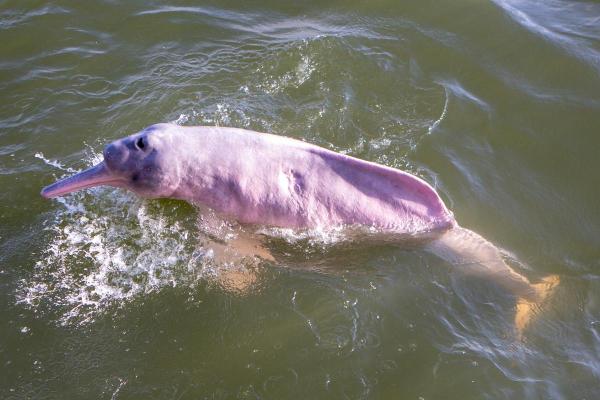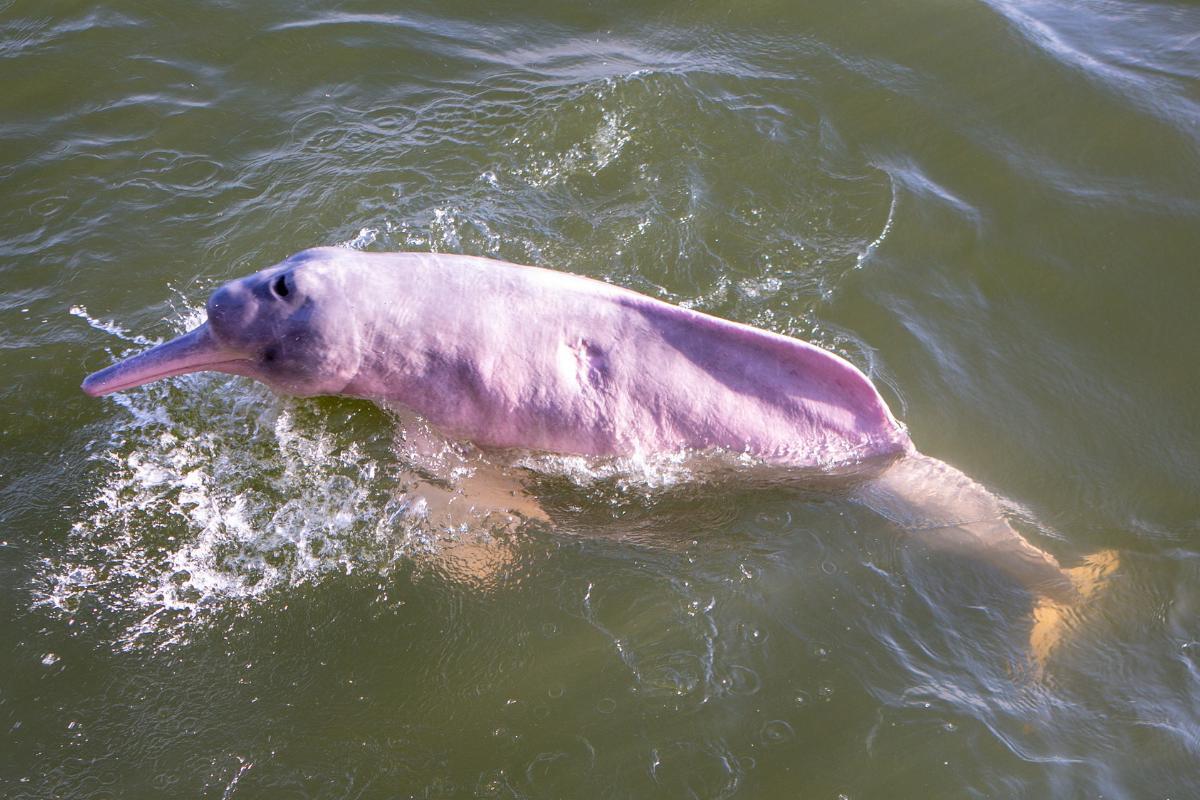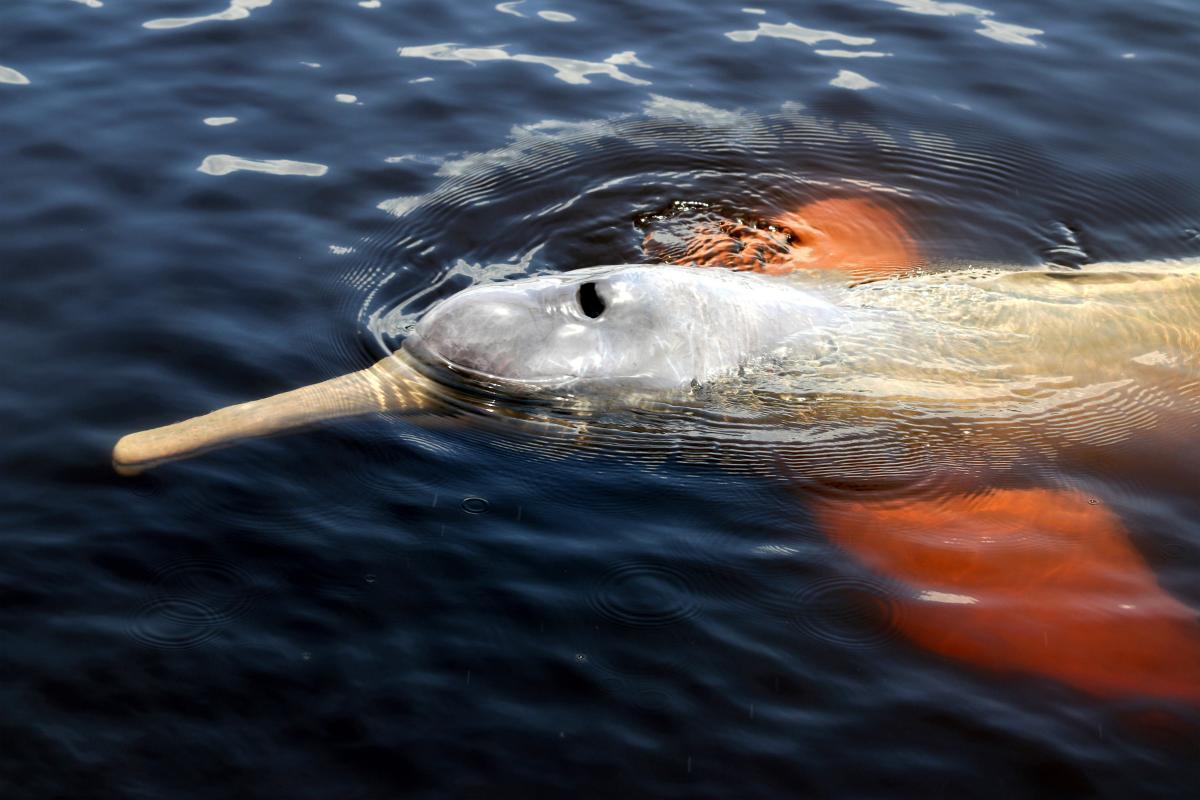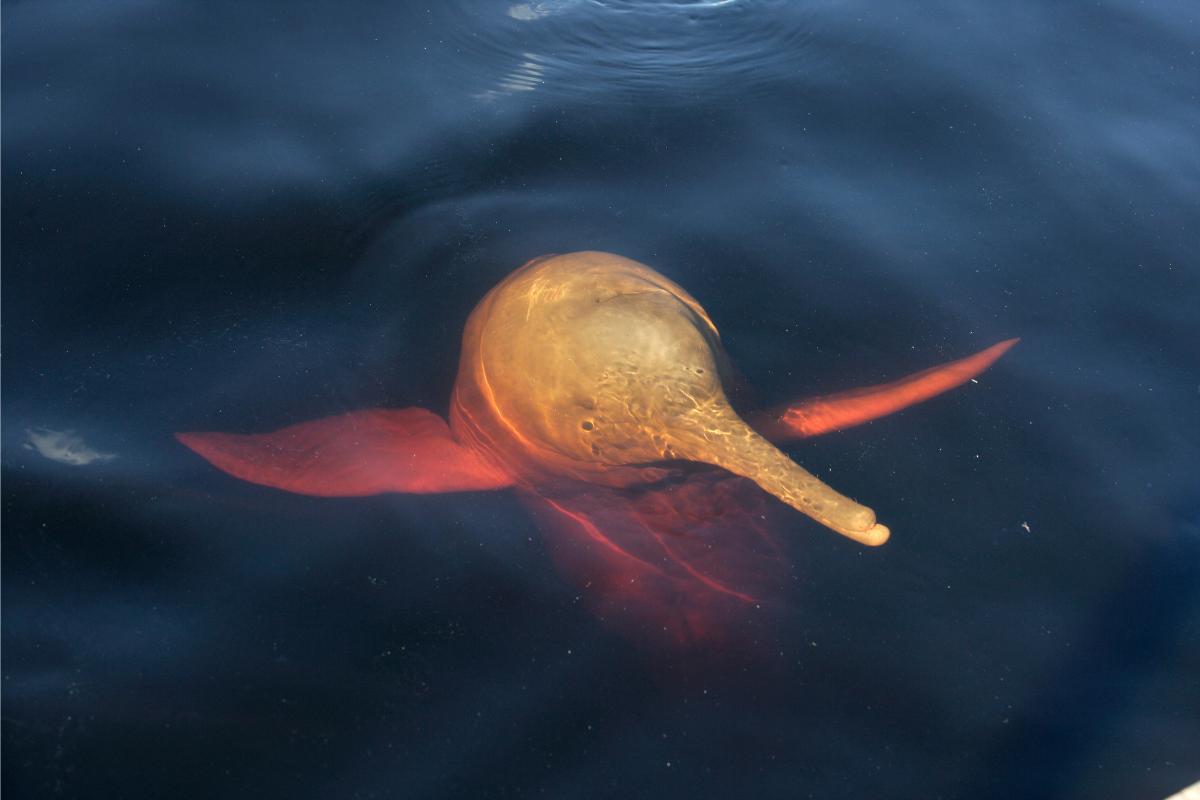Are Amazon Pink Dolphins in Danger?


The Amazon pink dolphin, scientifically known as Inia geoffrensis, is an aquatic creature well known both in myth and fact. It derives its name from the soft hue that tinges its skin. In addition to its captivating appearance, the pink dolphin plays an integral role in Amazonian ecology and culture. There are, however, a number of threats that threaten the existence of the Amazon pink dolphin in the near future.
The following article from thedailyECO delves into the endangered status of the Amazon pink dolphin, offering insights into the factors contributing to its potential extinction. We also provide actionable steps that individuals can take to contribute to the species' conservation.
What is the Amazon pink dolphin?
The Amazon pink dolphin, scientifically known as Inia geoffrensis, is a unique species of freshwater dolphin native to the Amazon River and its surrounding waterways in South America. Also referred to as the pink river dolphin due to its distinctive pink or gray coloration.
Amazon pink dolphins have a streamlined body shape, long snouts, and paddle-like flippers that enable them to navigate through the intricate river systems. Their specialized physical features include unfused neck vertebrae, allowing them greater flexibility to maneuver in shallow and complex waters.
These dolphins possess a complex social structure and are known for their intelligence, communicating through a range of vocalizations. They feed primarily on fish, using echolocation to locate their prey in the murky waters of the Amazon.
On the other hand, the unique pink coloration of the Amazon pink dolphins is believed to be a result of a combination of factors, including blood vessels close to the skin's surface and environmental influences. Their skin appears to be more translucent, allowing the underlying blood vessels to show through. The pink hue could be a result of the interaction between the blood flow, the skin's thickness, and possibly even the water's reflection and scattering of light.
Unfortunately, the Amazon pink dolphin is currently listed as threatened on the Red List of Threatened Species, highlighting its precarious conservation status. The decline in its population has been particularly notable between 2000 and 2017, with an alarming acceleration in recent years.
Why is the Amazon pink dolphin in danger of extinction?
The imminent risk of extinction faced by the Amazon pink dolphin stems from a variety of contributing factors, which we will delineate below:
Incidental capture in fishing nets
Dolphins, including the Amazon pink dolphin, are highly susceptible to becoming trapped in fishing nets designed for human consumption. They are also ensnared in nets intended for the Amazonian manatee Trichechus inunguis, which locals use for both sustenance and medicinal purposes.
Use of meat as bait
A dire threat to the pink dolphins involves the utilization of their meat as bait for fishing, particularly targeting the piracatinga fish (Calophysus macropterus). This practice, prevalent since 2000 in Brazil, has since extended to neighboring countries. In Brazil's Amazonas state alone, it is estimated that as many as 4,000 dolphins are killed annually. Although the government has banned this piracatinga fishery, illegal practices continue to persist.
Alteration of water tributaries
Increasing populations demand greater resources, including water. In various regions where these dolphins reside, natural water courses have been altered, alongside the construction of dams. These changes have significantly restricted the dolphins' movement and access to resources, intensifying competition among species.
Intensive water extraction in wetlands
Pink dolphins are highly dependent on adequate water levels, particularly as they venture into wetlands. However, these areas have been experiencing water loss due to both climate change and human settlements.
Water pollution from heavy metals and organochlorine compounds
The rampant water pollution stemming from human activities is another looming threat. The presence of organochlorine compounds, commonly found in pesticides, poses a significant risk. During rainfall and irrigation, these compounds are washed into rivers, potentially exposing dolphins to carcinogenic substances.
Expand your understanding of overfishing by delving into our other article. Discover the implications, causes, and potential solutions surrounding this critical issue.

How many pink Amazon dolphins are left in the world?
Currently, there exists no comprehensive analysis of the exact abundance or population count of pink dolphins, primarily due to the intricate nature of their population dynamics. Abundance varies significantly across different regions; while they thrive in certain areas, they remain scarce in locales lacking sufficient prey.
In 1979, an estimate was conducted in specific regions, ranging from a few dozen to a few hundred individuals. Another study conducted within the Mamirauá reserve, close to Tefé, recorded a total of 13,000 pink dolphins between 1999 and 2001. Evidently, a consensus regarding the data remains elusive, and a comprehensive assessment spanning the species' entire distribution range is still outstanding.
This scarcity of data is a result of the limited understanding of individual movement patterns. Addressing this gap necessitates further research efforts to ascertain accurate and concrete figures regarding the population dynamics of these enigmatic creatures.

How we can help the Amazon pink dolphins?
You can play a significant role in aiding the endangered Amazon pink dolphins by taking both individual and collective actions. Here are several impactful ways to contribute to their conservation:
- Support conservation organizations: contribute to reputable organizations focused on pink dolphin research and protection, such as the World Wild Fund (WWF). Donations help fund vital conservation efforts and initiatives.
- Educate others: raise awareness about the pink dolphins' plight by educating your community, friends, and family. Share information about the threats they face and the importance of their conservation.
- Promote sustainable fishing practices: advocate for responsible and sustainable fishing practices in the region. Encourage local communities to adopt methods that reduce accidental capture of dolphins and other non-target species.
- Reduce water pollution: make conscious choices to minimize water pollution. Properly dispose of waste, avoid using harmful chemicals, and support initiatives that focus on water quality improvement.
- Advocate for regulations: support and advocate for stronger regulations and enforcement against harmful practices, such as illegal fishing and habitat destruction.
- Choose sustainable products: be mindful of the products you consume and their impact on the environment. Support sustainable and eco-friendly products to reduce your carbon footprint.
Your collective efforts, along with those of others, can contribute to the preservation of the Amazon pink dolphins and their unique ecosystem.
Regrettably, our collective human footprint on the environment is leading to existential challenges like climate change. To address these concerns, understanding the various categories of environmental impact is crucial. Explore further insights on this topic in our additional article.
If you want to read similar articles to Are Amazon Pink Dolphins in Danger?, we recommend you visit our Animals in danger of extinction category.
- da Silva, V., Trujillo, F., Martin, A., Zerbini, AN, Crespo, E., Aliaga-Rossel, E. & Reeves, R. (2018) Inia geoffrensis. The IUCN Red List of Threatened Species. Available at: https://www.iucnredlist.org/species/10831/50358152#geographic-range







